Have any questions?
Get in touch-
Tel : +86 18355532477
-
Whatsapp : +8618355532477
-
Email : 247137166@qq.com
-
Skype : 247137166@qq.com
Have any questions?
Get in touchTel : +86 18355532477
Whatsapp : +8618355532477
Email : 247137166@qq.com
Skype : 247137166@qq.com
Why laser heat treatment processing automobile molds can save costs
Apr 29 , 2021Definition of laser heat treatment:
In the laser heat treatment process, a laser beam with a typical spot size between 0.5×0.5 inches and 2×2 inches irradiates the surface of the metal part as a means of transferring heat to it. The laser energy is delivered in such a way as to raise the temperature of the metal surface and the heat-affected zone (HAZ) above its metallurgical transformation temperature. When the laser heat source is removed, the heat of the metal is removed by conductive heat to provide rapid quenching of the heated area, thereby producing the required hardness. The laser beam operation details can be fine-tuned to precisely control all aspects of the hardening process. Depending on the geometry, laser heat treatment also allows the line-of-sight treatment of areas that are difficult to reach in other ways. Laser heat treatment is sometimes called laser hardening.
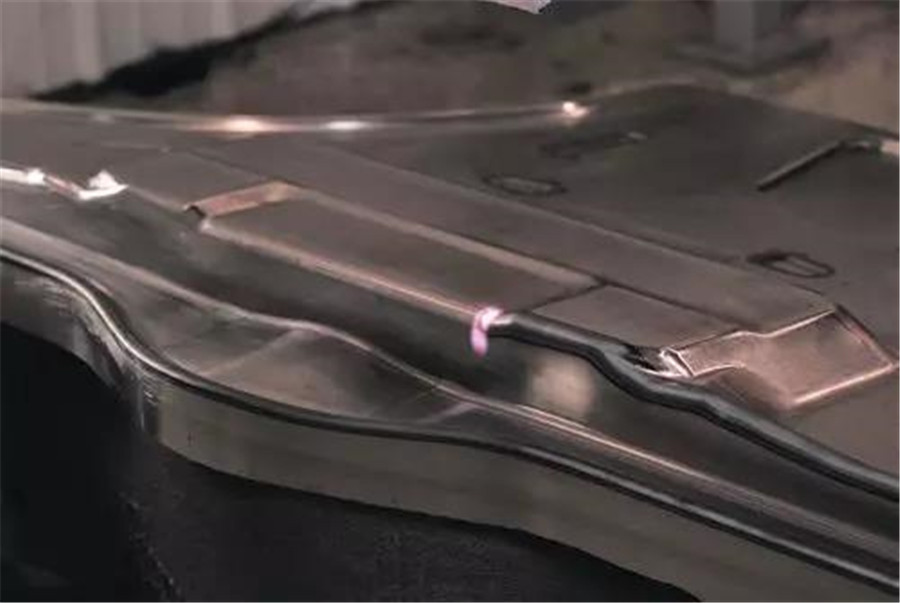
Laser heat treatment of automobile stamping die on the side of fairing
Advantages of laser heat treatment:
Compared with traditional heat treatment techniques such as induction, furnace, and flame heat treatment, the benefits of laser heat treatment are:
Consistent hardness depth:
Through precise control of the energy delivered to the metal itself, including millisecond feedback control, the characteristics of laser energy mean that laser heat treatment can produce a strict specification of HAZ, thereby achieving a consistent hardness depth within a very tight tolerance range.
Most car molds do not require hard milling:
In addition to the precise control mentioned above, the inherent characteristics of the laser energy itself mean that for any given HAZ size, laser heat treatment can automatically provide the smallest possible total energy to the processed mold. In most automobile molds, the built-in function of this process can automatically achieve zero distortion. Unlike traditional heat treatment methods that require grinding additional material after heat treatment, laser heat treatment is performed after cutting the mold into the final shape. This can avoid additional processing operations when the material is hard and save costs.
Higher hardness:
Due to the rapid self-quenching of the heat-treated area in the laser heat treatment, under the correct process conditions, the typical hardness achieved by this process is often several points higher than that of the flame or induction process.
Accurately focus the beam energy to the working point:
The flame or coil need not be close to the work area. Laser heat treatment has a greater ability to apply heat only to the desired area, and the heating of adjacent areas is minimal or even zero.
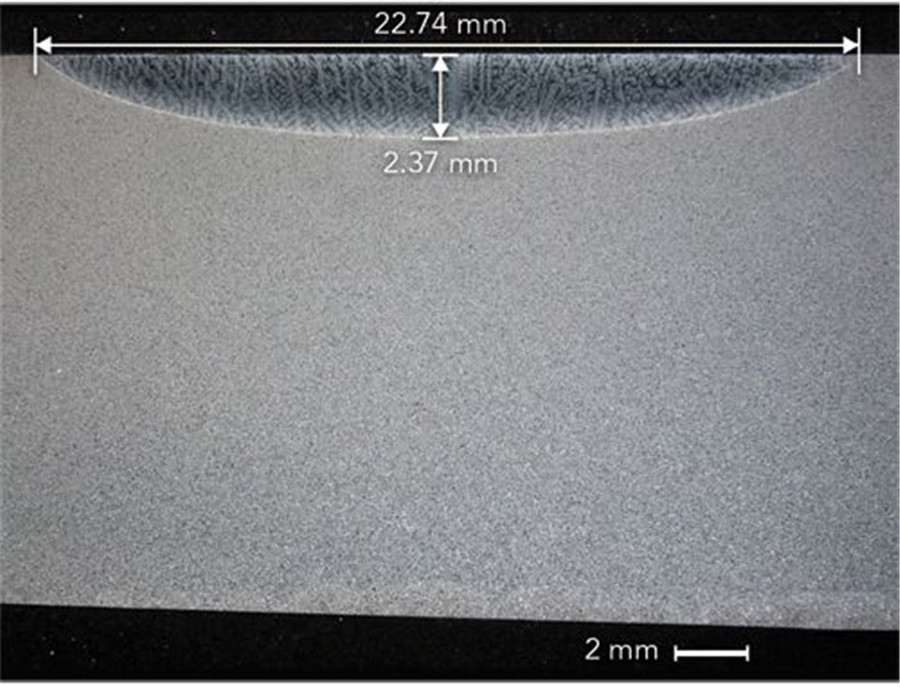
Commonly processed materials in the automotive industry include:
D6510 ductile iron, S7140 alloy steel, G2500 gray cast iron, G25HP gray cast iron, G3500 gray cast iron, D4512 ductile iron, S0030 non-alloy steel, S0050A alloy steel, A2 tool steel, D2 tool steel, S7 tool steel, M2 tool steel, 4140 Alloy steel, 4340 alloy steel.
Costs-effective Solutions:
The cost savings of laser heat treatment in the manufacture and maintenance of automobile molds mainly comes from the elimination of the post-hardening size recovery process. To illustrate the potential of laser heat treatment, please refer to the following case study from a local OEM mold supplier.
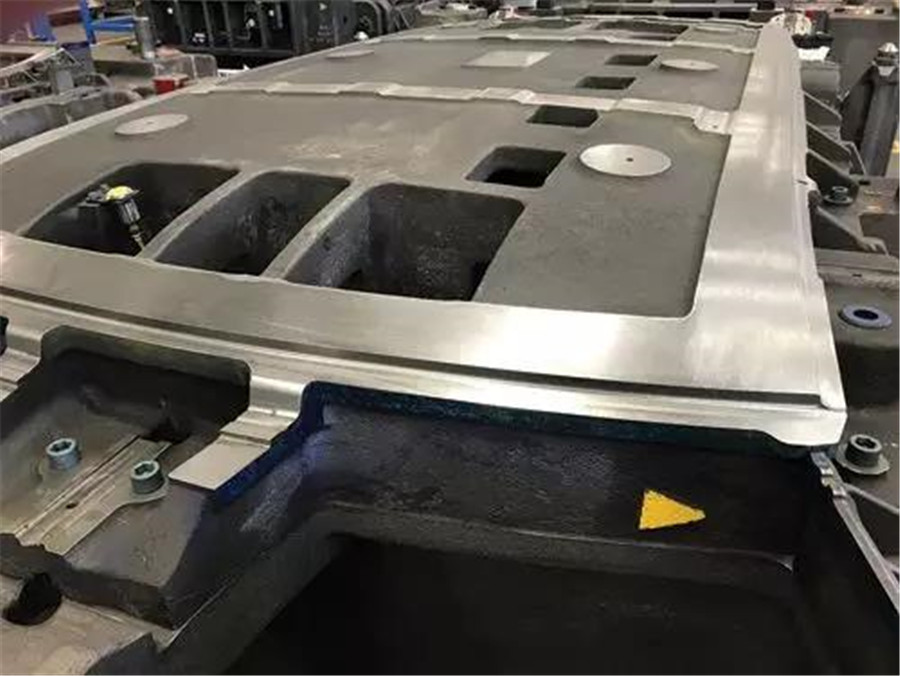
The mold size is 177×95×54 inches and weighs 93,000 pounds
A medium-sized OEM manufacturer usually produces 40 to 100 such molds per year. The weight of the mold ranges from 8,000 to 95,000 pounds. For this process, take a medium-sized decorative mold weighing about 42,000 pounds as an example, calculate the time cost of product processing and the number of calendar days for each step. The following table summarizes the results and explains them in detail in the table.
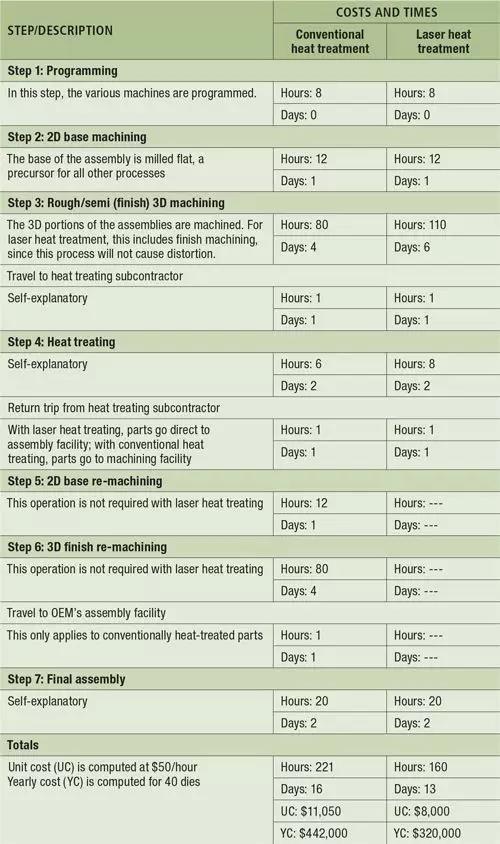
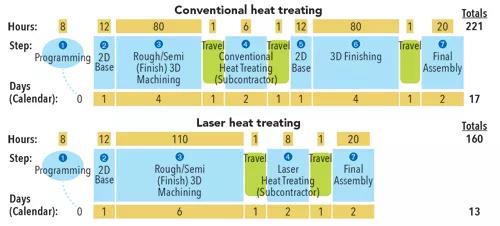
Conclusion:
The annual cost of the product line was reduced from US$442,000 to US$320,000 using laser heat treatment, a saving of 27.6%. Delivery time was reduced from 17 days to 13 days, and the net growth rate was 23.5%.
click here to leave a message